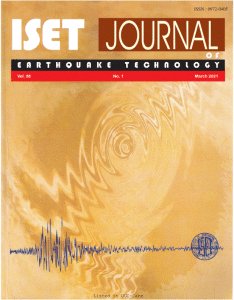Home > Issues & Journals
Ground response analysis and estimation of liquefaction potential of a site for near field and far field earthquake motions
Ranjan Kumar, Nikhil Gupta and Kapilesh Bhargava
Paper No.: 583
|
Vol.: 60
|
No.: 4
|
December, 2023
|
pp. 127-156

Abstract
In the recent past, studies on the effects of near field and far field earthquakes on liquefaction potential of a site attracted the attention of researchers. Evaluation of liquefaction potential of a project site is presented. Input soil properties are estimated by conducting in-situ tests and laboratory tests on disturbed/undisturbed samples obtained from 38 boreholes spread over 7 zones across the site. Liquefaction potential is evaluated using empirical method. It is observed that out of 38 boreholes, 4 boreholes are found to be critical against liquefaction. The effects of near field and far field earthquake on liquefaction potential have been studied. Nine near field and seven far field free surface earthquake ground motions are converted into bedrock motions through deconvolution which is taken as input for detailed ground response analysis (GRA) of 4 critical boreholes. Soil behaviour is considered as equivalent linear and non-linear for GRA. Two boreholes are found to be liquefiable for some far field earthquakes and the other two are found to be safe for all earthquakes. The results have been compared. Cyclic stress ratio (CSR) obtained from empirical and GRA method is also compared and it is observed that values vary with regard to ground motions.
Keywords: Liquefaction, Earthquake Ground Motion, Ground Response Analysis
©2025. ISET. All Rights Reserved.